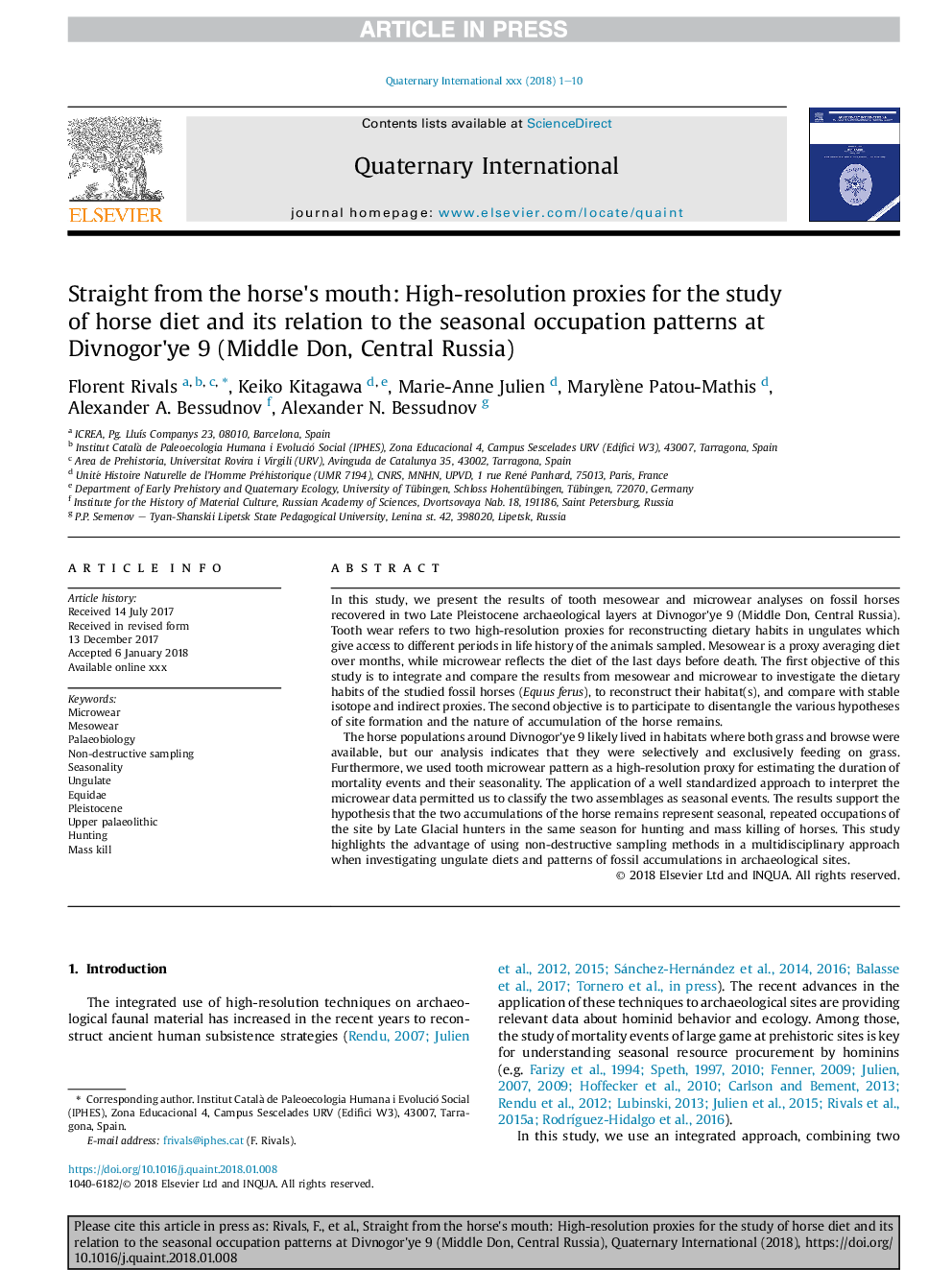| Article ID | Journal | Published Year | Pages | File Type |
|---|---|---|---|---|
| 7449710 | Quaternary International | 2018 | 10 Pages |
Abstract
The horse populations around Divnogor'ye 9 likely lived in habitats where both grass and browse were available, but our analysis indicates that they were selectively and exclusively feeding on grass. Furthermore, we used tooth microwear pattern as a high-resolution proxy for estimating the duration of mortality events and their seasonality. The application of a well standardized approach to interpret the microwear data permitted us to classify the two assemblages as seasonal events. The results support the hypothesis that the two accumulations of the horse remains represent seasonal, repeated occupations of the site by Late Glacial hunters in the same season for hunting and mass killing of horses. This study highlights the advantage of using non-destructive sampling methods in a multidisciplinary approach when investigating ungulate diets and patterns of fossil accumulations in archaeological sites.
Keywords
Related Topics
Physical Sciences and Engineering
Earth and Planetary Sciences
Geology
Authors
Florent Rivals, Keiko Kitagawa, Marie-Anne Julien, Marylène Patou-Mathis, Alexander A. Bessudnov, Alexander N. Bessudnov,
